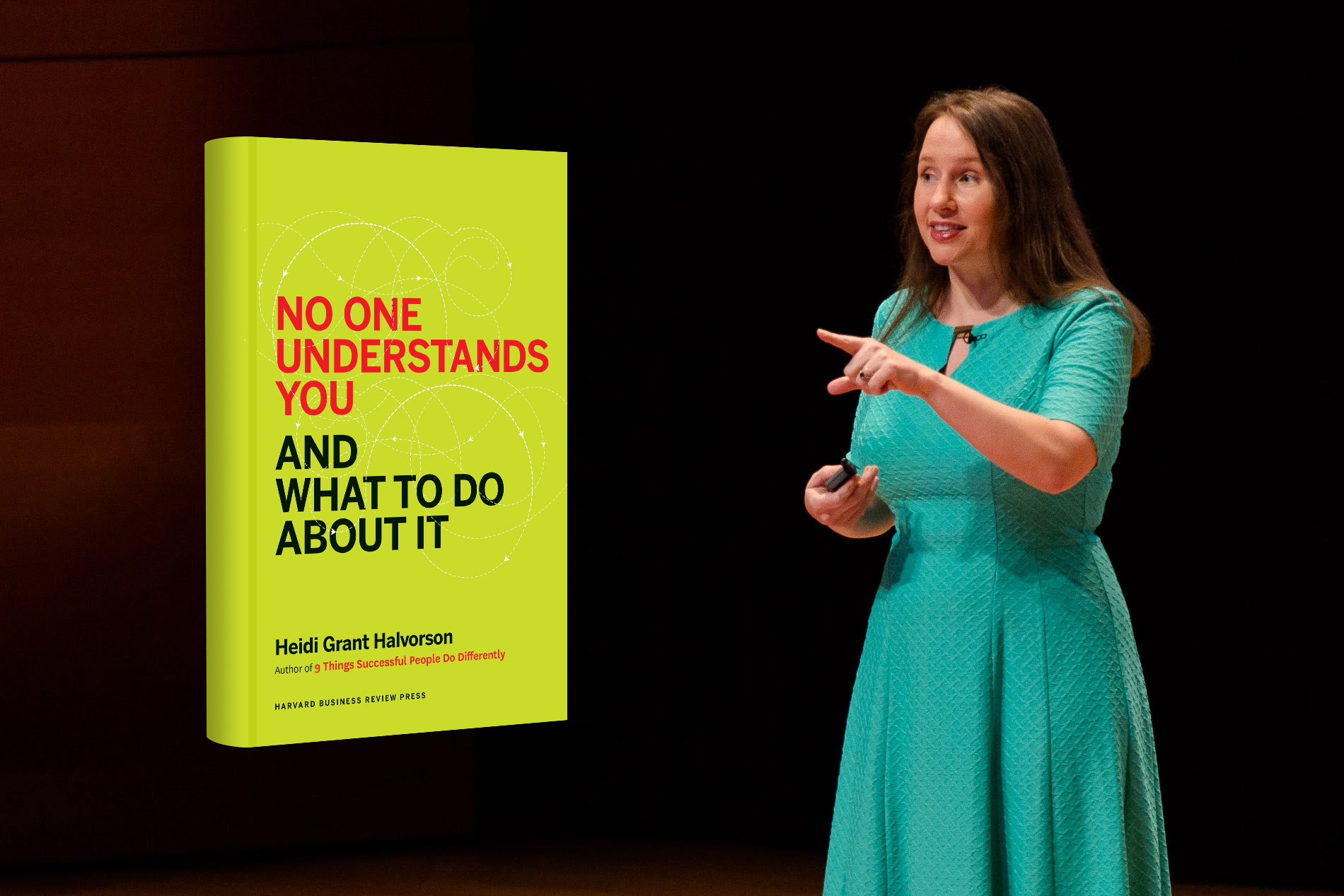Few experiences in life are more discouraging than to find out that the people we work with find us misdirected, not understood, not trusted.
”Communication is vital, but the great irony is that human beings have a surprisingly difficult time when it comes to knowing what exactly they are communicating.” -Heidi Halvorson
As executive coaches there are few people we meet who haven’t had the experience of working our hearts out to achieve a goal for our organization only to find out that we have big problems in the way we come across to the people we work with.
Few experiences in life are more discouraging than to find out directly or indirectly that bosses, colleagues and teams find us annoying, difficult, self-seeking and misdirected, too aggressive, too passive, not understood, not trusted.
That’s why Heidi Halvorson, Harvard professor, set out to write a book, Nobody Understands You and What to Do About It, that would answer her husband’s question about why he, as senior manager, skilled at communication, found himself re-explaining and reframing his message again and again. Halvorson’s book is one of the most significant books on the topic of how we come across that has been written in the last decades.
Halvorsen’s book has become a basic tool for us in executive coaching. There are Halvorson videos that are even better than the book, and well worth the investment in watching.
Here are some of the most important insights:
1. It’s a shocking to most of us, but we are surprisingly hard to understand. Many of us see ourselves as the standard for “normal people”—in our minds we’re straight shooters, clear communicators, extremely logical, and very collaborative. Yet this is hardly the case from the other person’s vantage point. We have different family backgrounds, ethnic points of view, personality types, and different experiences that have made us unfold very differently from each other. You think you made your point time and again, but those who heard it have different ears from yours.
2. When people look at you, they are looking for themselves. When I used to walk into a room, when I was sizing people up—and I thought I was really good at that—I was looking for anyone that was like me. The more they were different from me, I saw them as “off point.” Now I look for differences and seek to understand them, and relate to others by looking for commonalities. I find that I connect with people much more effectively.
3. When you get off on the wrong foot with people, you can get back on track. Getting people to take a second look is difficult but possible. Most people come to us as executive coaches, because they’re having trouble with a boss, a colleague or a friend—and it’s jeopardizing their jobs and careers. They often have the sense that they can’t regain an effective relationship, and sometimes that’s true. At the same time, you can get someone to take a second look at you. You need to take a step back, engage, and empathetically seek to understand them…rather than obsess about how they don’t understand you. Never hide or avoid.
4. If you want to make yourself indispensable to key people in your organization, fit your agenda into where they’re going. My strategy in my career was to “impress my way to success.” I thought that if I did something totally amazing and better than you could do it, you would admire me and love me. My amazing efforts were often met with a shrug. When I found out what the goals of the key people around me were and how I could help them achieve their goals, my career path took a sharp turn upward.
5. If you want to change people’s impressions of you, you have to exaggerate the behaviors you’re working to project. If you’re a team leader who has rolled over your team by both ignoring them and micromanaging them while being totally insensitive to their feelings and thwarting their initiatives, they won’t even see your changes unless you change radically and exaggerate a new role of the collaborative leader.
Consider an Executive Coach to Help You Connect to your Organization
As a leader, you have a challenging journey to accomplishing your team’s goals. Here are some factors you might consider:
1. You need to make some measurable changes quickly. Your team’s success is on the line, and perhaps your career. With the right coach, you’ll make changes in months—not years.
2. You need behavioral assessments—science on your side. We use MBTI® Step II (RT), the Delta 360, the CPI 260 Leadership model, and other assessments that will pinpoint your course of action.
3. You need real time feedback from an executive coach to guide you through the process. Your ability to lead the team calls for an effective, experienced coach who can help you apply what you’ve learned and give you feedback on your increasingly effective leadership. There will be challenges in the beginning, and a coach can be that voice that helps you succeed.
There is hardly anyone who does not feel that others “don’t get you,” and this is true. Life is an imperfect process of connecting with other people. Halvorson’s book is a great tool to helping us do that.






